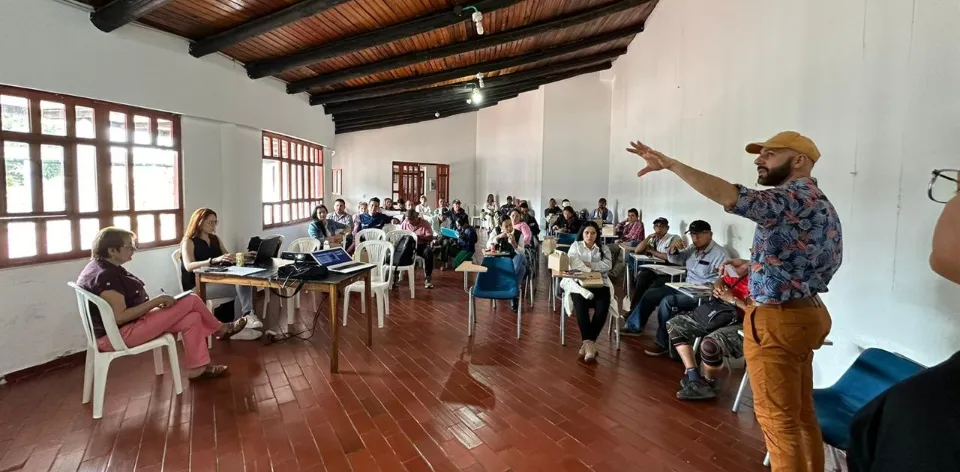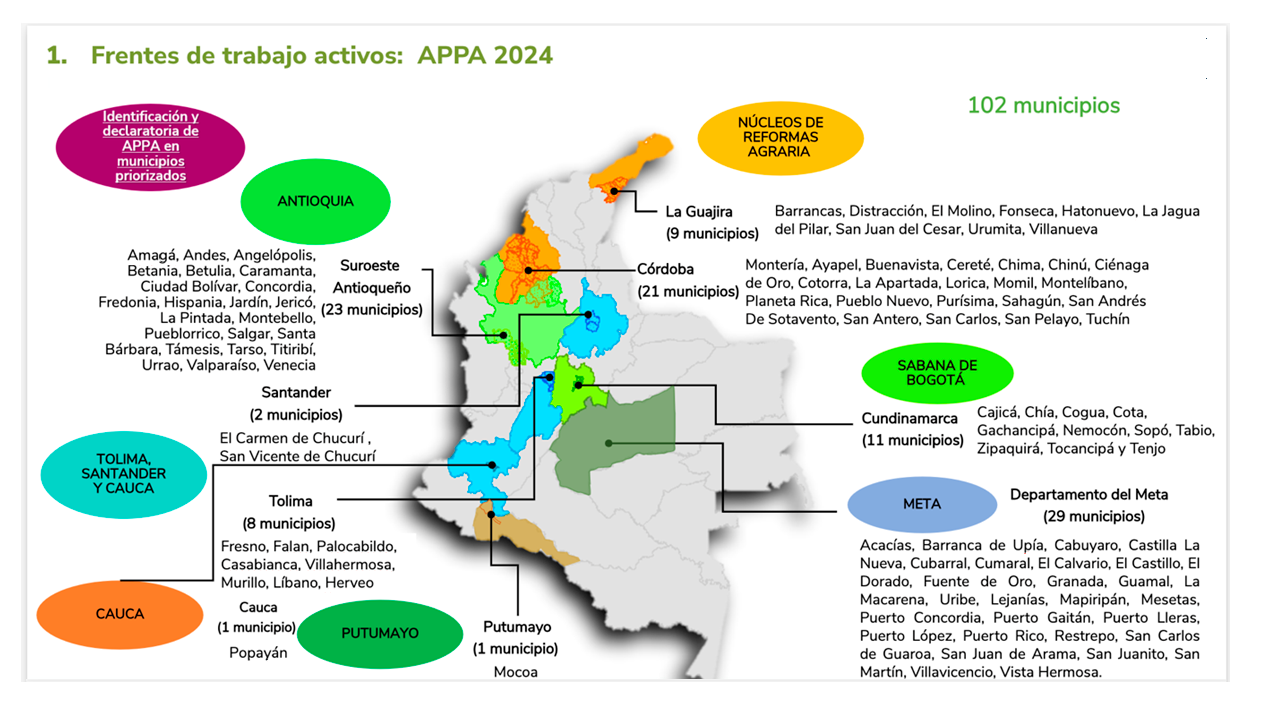 16/9/2024
16/9/2024
Ministry of Agriculture and UPRA in the process of identifying Areas of Protection for Food Production (APPA) in 102 municipalities across the country.

Antioquia, Córdoba, Tolima, Santander, Cauca, Putumayo, Meta, and the Sabana Centro are some of the regions where the process of identifying the Areas of Protection for Food Production (APPA) is underway.
In La Guajira, eight municipalities have already completed the identification and declaration of APPAs.
Bogotá, D.C., (@UPRAColombia). During a session of the Taller Aula UPRA, Dora Inés Rey Martínez, the Technical Director of Ordenamiento Social de la Propiedad y Mercado de Tierras Rurales, provided updates on the APPA implementation in La Guajira. She explained that the process is currently underway in 102 municipalities, spanning multiple departments across Colombia.
“Of the nine municipalities involved in La Guajira, eight APPAs were declared, while the ninth municipality, Hatonuevo, is part of the Línea Negra (sacred indigenous boundary) and remains excluded from the process.”
Additionally, the identification process is being carried out in 23 municipalities in Antioquia, eight in Tolima, two in Santander, one in Cauca, one in Putumayo, 29 in Meta, 11 in the Sabana Centro of Bogotá, and 21 in Córdoba.

What Are the APPA?
APPAs are rural areas located within the agricultural frontier, which possess the appropriate conditions for food production. Given their priority status for the State, they play a crucial role in safeguarding the right to food for Colombians.
Objectives of the APPA:
The primary objective of the APPA is to protect the right to adequate food. Additional objectives include:
- Promoting efficient use of rural agricultural land and water resources.
- Preventing the degradation and loss of soil critical for food production.
- Ensuring the continuous availability of nutritious, culturally acceptable food.
- Encouraging rural development to secure the right to food.

